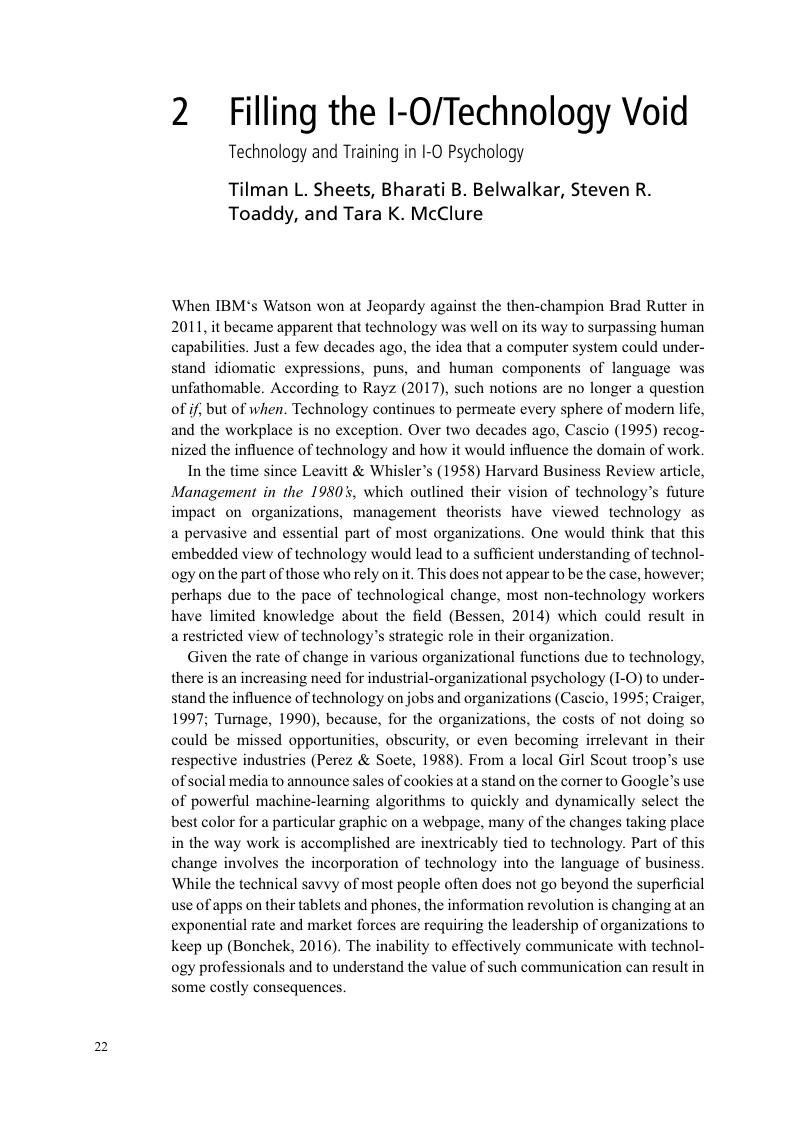Book contents
- The Cambridge Handbook of Technology and Employee Behavior
- The Cambridge Handbook of Technology and Employee Behavior
- Copyright page
- Dedication
- Contents
- Notes on Contributors
- Preface
- Acknowledgments
- Part I Technology in I-O Psychology
- 1 The Existential Threats to I-O Psychology Highlighted by Rapid Technological Change
- 2 Filling the I-O/Technology Void
- 3 The Reciprocal Roles of Artificial Intelligence and Industrial-Organizational Psychology
- Part II Technology in Staffing
- Part III Technology in Training and Development
- Part IV Technology in Leadership and Teams
- Part V Technology in Motivation and Performance
- Part VI Technology in Statistics and Research Methods
- Part VII Interdisciplinary Perspectives on Employees and Technology
- Index
- References
2 - Filling the I-O/Technology Void
Technology and Training in I-O Psychology
from Part I - Technology in I-O Psychology
Published online by Cambridge University Press: 18 February 2019
- The Cambridge Handbook of Technology and Employee Behavior
- The Cambridge Handbook of Technology and Employee Behavior
- Copyright page
- Dedication
- Contents
- Notes on Contributors
- Preface
- Acknowledgments
- Part I Technology in I-O Psychology
- 1 The Existential Threats to I-O Psychology Highlighted by Rapid Technological Change
- 2 Filling the I-O/Technology Void
- 3 The Reciprocal Roles of Artificial Intelligence and Industrial-Organizational Psychology
- Part II Technology in Staffing
- Part III Technology in Training and Development
- Part IV Technology in Leadership and Teams
- Part V Technology in Motivation and Performance
- Part VI Technology in Statistics and Research Methods
- Part VII Interdisciplinary Perspectives on Employees and Technology
- Index
- References
Summary

- Type
- Chapter
- Information
- Publisher: Cambridge University PressPrint publication year: 2019
References
- 1
- Cited by

